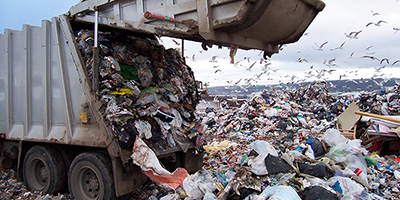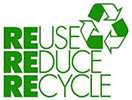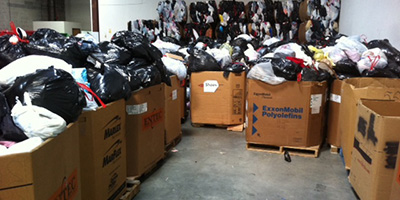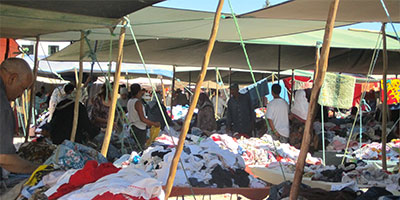Despite the charity and non-charity thrift store activities, another
13.1 million tons of textile waste is generated yearly, which is 5.3 percent of total Municipal Solid Waste (MSW) generation.

 Reduce, Reuse, Recycle is the motto. Approximately 90% of this waste is recyclable. It is either Reusable (can still be worn) or it is Recyclable (can be turned into other usable items such as industrial cleaning clothes or other recycled fibers). Therefore, it is obvious that if we divert these materials from the landfills we can Reduce landfill space and expansion; and the amount of Co2 produced due to waste. The question then is; if the majority of these materials are recyclable, why do they continue going to the landfills?
Reduce, Reuse, Recycle is the motto. Approximately 90% of this waste is recyclable. It is either Reusable (can still be worn) or it is Recyclable (can be turned into other usable items such as industrial cleaning clothes or other recycled fibers). Therefore, it is obvious that if we divert these materials from the landfills we can Reduce landfill space and expansion; and the amount of Co2 produced due to waste. The question then is; if the majority of these materials are recyclable, why do they continue going to the landfills?
It is also important to understand the whole process of the efforts of charity and non-charity thrift stores.First of all, out of all the donations received only a very small amount is given away. They are mostly sorted through and the better quality items are placed in their stores for sale. The clothing not deemed showroom or store worthy remains in the back of their buildings. The clothing that is not purchased by shoppers will be returned to the back of the building and mixed with the other items. The result of this all across the country is literally millions of pounds of clothing that these store/charities must get rid of monthly.
So, what do they do? They sell it to textile recycling companies.
If these recyclers did not exist the charity/thrift stores would be in a bind. Thus, by their dumping there would be a tremendous increase in the amount of clothing going to our local landfills.

Therefore, they rely on textile recyclers to purchase the clothing from them so that it may be further sorted, processed and either sent to international markets (mostly to third world countries) or recycled into a new product.We should remember that as stated above, there are still around 13.1 million tons of clothing still reaching our nation’s landfills because the charity efforts alone are not enough. Due to the points mentioned above and the fact that the EPA is ever increasing its restrictions on what is permitted in landfills; the Federal, State, County and City Governments are increasing their own efforts in recycling of plastics, papers and metals as well as supporting the private sector in their efforts of other materials, such as textiles.

We at Recyclable Textile Management are proud to participate in this process as a private company because we understand the environmental issues at hand but, we also enjoy the humanitarian side of textile recycling. It is rewarding to know that because of our efforts and other companies like us, hundreds of thousands of people in third world countries are able to purchase affordable, quality, gently used clothing and dress dignified.
